#WebAnimation
Explore tagged Tumblr posts
Text
3 Easy Steps to Create an Animated Website Navigation Bar

Creating an animated website navigation bar is one of the most effective ways to improve the user experience and enhance the design of your website. Whether you're working on a personal blog, a business website, or an e-commerce platform, an animated navbar can make a significant impact. In this article, we'll walk you through three simple steps to create a dynamic, visually appealing animated navbar using HTML CSS.
By following these steps, you'll be able to add smooth animations, interactive transitions, and stylish effects to your website's navigation menu. So, let’s dive into how you can easily craft an animated website navigation bar that will elevate the look and feel of your site.
Why Create an Animated Website Navigation Bar?
Before we dive into the steps, let's take a moment to understand why an animated website navigation bar is important:
Enhanced User Experience: An animated website navigation bar can make your website more engaging, making it easier for users to interact with your site.
Sleek, Modern Design: Adding subtle animations to your navbar can give your site a polished, modern look, improving its aesthetic appeal.
Smooth Transitions: With animation effects, such as color changes or hover effects, visitors will experience smoother transitions as they navigate through your website.
An animated navbar HTML CSS also allows you to create a menu that feels more dynamic, engaging visitors as they interact with your website’s menu items.
Step 1: Plan the Layout and Structure of the Navbar
The first step in creating an animated website navigation bar is planning its structure. You’ll want to start by identifying the key elements that should be present in your menu. Generally, these include:
Navigation links: Links to other pages or sections of your site.
Logo or brand name (optional): Adding your logo to the navbar helps establish branding.
Search bar (optional): If relevant, you can add a search bar for quick access to content.
The layout of the menu navbar should be intuitive and easy to navigate. Once you’ve planned out your navigation menu, the next step is to style it with CSS.
Step 2: Apply Styles for Your Animated Navbar
Now that you have the structure of your animated website navigation bar, the next step is to style it using CSS. The goal here is to create a smooth and interactive experience for your users. Here are a few tips to make your navbar look sleek:
1. Choose a Color Scheme for Your Navbar
The color scheme of your menu navbar plays a crucial role in its visual appeal. You want to pick colors that align with your website's overall theme. Many websites use a minimalist color scheme with a dark background for the navbar and light-colored text for the links.
You can further enhance the colour effect navbar by using subtle animations that change the background color of the navbar or the hover state of individual links. This helps to create a visually dynamic experience as users interact with your navbar.
2. Add Hover Effects for Links
A key feature of an animated navbar is the hover effect. When a user hovers over a navigation link, it should change in some way, whether it’s changing the color, size, or adding an underline. This simple interaction adds a layer of engagement and makes the navigation feel more interactive.
Consider using smooth transition effects for hover actions to make the change feel fluid. For example, you could apply a color shift, increase the font size, or add a smooth underline effect when the user hovers over a menu item.
3. Make the Navbar Sticky
A sticky navbar stays fixed at the top of the screen as users scroll down. This is a highly popular design choice for websites because it allows users to access the menu at any time without having to scroll back to the top.
To achieve this, use the CSS position: sticky; property. A sticky navbar is not only practical but can also be made more stylish with animations. For instance, you could animate the navbar's background color to change once the user starts scrolling, giving a sense of movement and responsiveness.
Step 3: Add Animation Effects for Dynamic Interactions
The final step in creating your animated website navigation bar is adding animations to enhance the user experience. Animations can be applied to various aspects of the navbar, such as the appearance of the menu, hover effects, and transitions.
1. Slide-In Animation for the Navbar
One popular animation effect is the slide-in animation. When the user clicks the hamburger menu (for mobile views), the navbar can smoothly slide in from the side of the screen. This type of animation is simple yet effective, adding a modern touch to your animated navbar HTML CSS.
2. Smooth Transitions for Menu Items
To make the navbar feel more dynamic, you can use CSS transitions on the individual menu items. For example, you can apply a smooth transition that changes the color of the link when hovered over, creating a more polished and responsive design.
By adjusting the transition property in CSS, you can make the animated website navigation bar react smoothly to user interactions. This could include changes in size, color, or position of menu items.
3. Use Keyframe Animations for Complex Effects
If you want to go a step further, you can use keyframe animations to create more complex effects for your menu navbar. For instance, you could add a fade-in effect for the menu when the page loads or create a bouncing effect for the logo in the navbar. These animations can make the navigation feel more lively and engaging for your visitors.
Additionally, you can add a colour effect navbar, where the background of the navbar gradually changes colors based on user interactions or page scroll. This effect can create a visually stunning and memorable user experience.
Best Practices for an Animated Navbar
When designing an animated website navigation bar, it’s important to follow some best practices to ensure your navbar is functional, stylish, and accessible:
Keep Animations Subtle: Avoid overly flashy or distracting animations. Subtle animations work best for a professional and sleek design.
Ensure Accessibility: Make sure your animated website navigation bar is easy to navigate with both mouse and keyboard. Use clear text labels, and ensure that the links are accessible to screen readers.
Test Responsiveness: Make sure your navbar looks great on all devices. Test it on desktops, tablets, and mobile devices to ensure the animation and layout work properly.
Optimize Performance: While animations are visually appealing, too many animations can slow down your site. Keep performance in mind when designing your animated navbar HTML CSS to ensure a smooth user experience.
Conclusion
An animated website navigation bar is a fantastic way to improve the user experience and add a touch of modernity to your website. By following these three simple steps—planning your layout, applying stylish CSS, and adding engaging animations—you can easily create a menu navbar that is both functional and visually appealing.
The use of colour effect navbar and smooth transitions will help make your site stand out. With these tips, you can create a navbar that enhances your website's usability and aesthetic appeal, ensuring a seamless experience for your users.
Start implementing these ideas in your next web project, and watch how your visitors engage more with your site thanks to the smooth, animated navbar!
#webdesign#css#responsivedesign#frontenddevelopment#webanimation#animatedtext#webdevelopment#html#animatedcarousel
7 notes
·
View notes
Text
Common Webflow Development Mistakes and How to Avoid Them

Webflow has revolutionised the way we build websites, offering powerful features that blend the flexibility of a visual builder with the capabilities of code. However, like any robust tool, it's easy to make mistakes that can hinder the performance, usability, and aesthetics of your website. In this comprehensive guide, we will explore the common Webflow development mistakes and provide actionable strategies to avoid them.
1. Neglecting Mobile Responsiveness
In today's digital landscape, mobile responsiveness is crucial. Your website may have a worse user experience and rank lower in search results if it is not mobile-friendly.
How to Avoid It:
Use Webflow’s built-in responsive design tools: Start by designing your site for the smallest screen size and progressively enhance for larger screens.
Test on multiple devices: Regularly preview your site on different devices and browsers to ensure consistency.
Utilize Flexbox and Grid Layouts: These layouts help maintain structure across various screen sizes without breaking the design.
2. Overcomplicating Animations and Interactions
While animations and interactions can enhance user experience, overcomplicating them can lead to slow load times and a cluttered interface.
How to Avoid It:
Prioritize simplicity: Use animations to enhance user experience, not distract from content.
Optimize for performance: Limit the number of animated elements and ensure they are optimized for fast loading.
Test loading times: Use Webflow's performance tools to test and refine your animations.
3. Poor SEO Practices
Ignoring SEO can severely limit your site's visibility. Common mistakes include not using proper heading tags, lacking meta descriptions, and not optimizing images.
How to Avoid It:
Use proper heading hierarchy: Ensure H1 tags are used for main titles, H2 for subheadings, and so on.
Optimize meta descriptions and title tags: Craft descriptive and keyword-rich meta descriptions and titles.
Image optimization: Use descriptive alt text for images and ensure they are properly compressed to improve load times.
4. Inefficient Content Management
Poor content management can lead to inconsistencies and difficulty in updating the site.
How to Avoid It:
Leverage Webflow CMS: Utilize collections and templates to manage content efficiently.
Maintain consistency: Establish style guides and templates to ensure a cohesive look and feel across all pages.
Regular updates: Keep content fresh and relevant by regularly updating your CMS.
5. Ignoring Accessibility Standards
Ensuring online accessibility guarantees that your website is accessible to and navigable by all users, including those with disabilities.Neglecting this can limit your audience and lead to legal issues.
How to Avoid It:
Follow WCAG guidelines: Implement Web Content Accessibility Guidelines (WCAG) to ensure your site is accessible.
Use semantic HTML: Properly structure your HTML with appropriate tags to aid screen readers.
Test accessibility: Use tools like WAVE and Webflow's accessibility checker to identify and fix accessibility issues.
6. Inconsistent Branding and Design Elements
Establishing a unified brand identity is essential for increasing recognition and trust.Inconsistent use of design elements can confuse visitors and dilute your brand message.
How to Avoid It:
Create a style guide: Develop a comprehensive style guide that outlines the use of colors, fonts, and design elements.
Consistent templates: Use consistent templates across your site to maintain a unified appearance.
Regular audits: Conduct regular design audits to ensure consistency in branding elements.
7. Overloading with Third-Party Integrations
While third-party integrations can enhance functionality, overloading your site with too many can slow down performance and complicate maintenance.
How to Avoid It:
Prioritize essential integrations: Only use third-party integrations that are necessary for your site's functionality.
Optimize and manage: Regularly review and update integrations to ensure they are optimized and do not conflict with each other.
Monitor performance: Use Webflow's performance tools to track the impact of integrations on load times and site speed.
8. Not Utilizing Webflow's SEO Settings
Webflow offers robust SEO settings, but many developers fail to take full advantage of them, resulting in missed opportunities for optimization.
How to Avoid It:
Utilize SEO settings: Ensure you are using Webflow's built-in SEO settings, including meta tags, alt text, and canonical URLs.
Generate sitemaps: Regularly update and submit your sitemap to search engines to improve indexing.
Monitor and update: Continuously monitor your SEO performance and make necessary adjustments based on analytics.
9. Poor Use of Collections and Symbols
Webflow's collections and symbols are powerful tools for managing recurring content and design elements. Poor usage can lead to inefficiencies and inconsistencies.
How to Avoid It:
Plan collections carefully: Structure your collections to make content management easy and efficient.
Use symbols for recurring elements: Utilize symbols for design elements that appear across multiple pages to maintain consistency and simplify updates.
Regularly update symbols: Ensure that symbols are up-to-date and reflect any changes in design or content.
10. Not Testing Interactivity and User Experience
A successful website must prioritize the user experience.Failing to test interactivity and user flows can result in a frustrating experience for visitors.
How to Avoid It:
Conduct user testing: Regularly test your site with real users to gather feedback on usability and interactivity.
Iterate based on feedback: Use the feedback to make informed improvements to your site's design and functionality.
Monitor user behavior: Utilize analytics tools to track how users interact with your site and identify areas for improvement.
By being aware of these common Webflow development mistakes and implementing the strategies outlined above, you can create a website that is not only visually appealing but also performs well in search rankings and provides a great user experience.
Website Here:- https://intorque.com/webflow-development/
#Webflow#WebDesign#SEO#WebDevelopment#DigitalMarketing#UserExperience#WebAccessibility#ResponsiveDesign#ContentManagement#WebsiteOptimization#Branding#WebflowTips#WebflowCMS#WebAnimation#WebPerformance#WebDesignMistakes#WebflowDevelopment#WebflowSEO#WebDev#WebflowCommunity
0 notes
Text
Unleash Your AI Potential with No-Code Tools
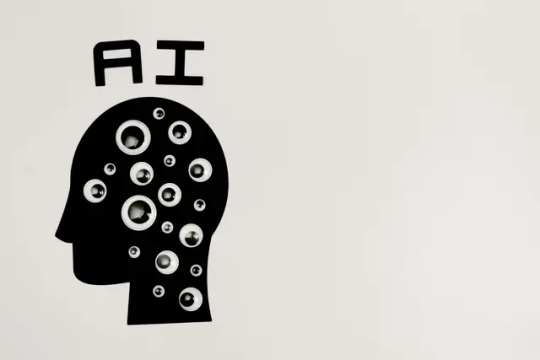
#nocode#lowcode#ux#digitaltransformation#pearljam#appdesign#graphicdesign#aftereffects#branding#motionuidesign#loopanimation#motiondesign#brandidentity#animate#microinteractions#vectorgraphics#svganimation#svgator#illustration#animation#webanimation#software#appdevelopment#webdesign#mobileapps#lyonnais#paidopartnership#lyonnaise#svg#svgatorxtwine
0 notes
Text
The Importance of SEO for Small Businesses in 2023 | One-Call
In 2023, SEO is more crucial than ever for small businesses to gain online visibility and stay ahead of the competition. Here's why SEO is important: 1) Improves website ranking on search engines, 2) Drives targeted organic traffic, 3) Enhances user experience and engagement, 4) Builds brand awareness and credibility, 5) Provides valuable consumer insights, 6) Delivers a higher ROI than traditional marketing, 7) Establishes a strong online presence, 8) Reaches mobile and local audiences effectively.
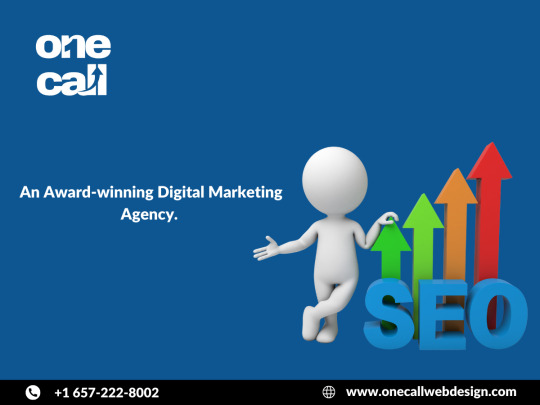
#DigitalMarketing#SocialMediaMarketing#ContentMarketing#InfluencerMarketing#VideoMarketing#EmailMarketing#DataAnalytics#WebDesign#UXDesign#ResponsiveDesign#MinimalistDesign#WebAnimation#SEOStrategy#KeywordResearch#LocalSEO#VoiceSearch#SEOAudit#TechnicalSEO
0 notes
Text
Website Animation Ideas To Boost Your User Experience | Examples Included
#WebAnimations#WebsiteDesign#UXDesign#WebDevelopment#WebDesign#UI#UIUX#Animation#DigitalDesign#UserExperience#OnlineMarketing#Creative#Inspiration
0 notes
Note
Looking online for new webcomics to read that aren't translated manga/manhwa cause I have read too many of those and want to check out something different this time. There are these comics whose designs I like that bother me cause they are sort of the cartoon interpretation of anime artstyle that I've seen antis like. I have come across art, comics, or webanimation with that design and many fans of those and it's creators are antis or even the creators themselves are one (the type to make posts asking people not to sexualize the characters cause it's bad/immoral) so I now associate the style with something bad.
I like the art and character design but past experiences make me not want to click on them.
--
16 notes
·
View notes
Text
List of works I've started/made TV Tropes pages for:
A.T.O.M. by @tyrantisterror : https://tvtropes.org/pmwiki/pmwiki.php/Literature/TheAtomicTimeOfMonsters
Wizarding School Mysteries by @tyrantisterror : https://tvtropes.org/pmwiki/pmwiki.php/Literature/WizardingSchoolMysteries
Daikaiju Yuki by @raffleupagus : https://tvtropes.org/pmwiki/pmwiki.php/Literature/DaikaijuYuki
Flowers of Etrea by @rochasaurusrex: https://tvtropes.org/pmwiki/pmwiki.php/ComicBook/FlowersOfEtrea
Lumi and the Great Big Galaxy by @starteas : https://tvtropes.org/pmwiki/pmwiki.php/WebAnimation/LumiAndTheGreatBigGalaxy
Prehistoria by Jack Blackburn: https://tvtropes.org/pmwiki/pmwiki.php/Literature/Prehistoria
Sauria: https://tvtropes.org/pmwiki/pmwiki.php/WebAnimation/Sauria
All Your Ruins by @mekagojira3k : https://tvtropes.org/pmwiki/pmwiki.php/Literature/AllYourRuins
Apt. 51: https://tvtropes.org/pmwiki/pmwiki.php/Series/Apt51
List of works I've created sub-pages for:
Arlo the Alligator Boy/I Heart Arlo by Ryan Crego: https://tvtropes.org/pmwiki/pmwiki.php/WesternAnimation/ArloTheAlligatorBoy
https://tvtropes.org/pmwiki/pmwiki.php/WesternAnimation/IHeartArlo
Berrybrook Middle School by Svetlana Chmakova: https://tvtropes.org/pmwiki/pmwiki.php/ComicBook/BerrybrookMiddleSchool
#tv tropes#the atomic time of monsters#wizarding school mysteries#daikaiju yuki#flowers of etrea#lumi and the great big galaxy#latgbg#all your ruins#apt 51#Sauria#prehistoria#arlo the alligator boy#i heart arlo#berrybrook middle school
53 notes
·
View notes
Text
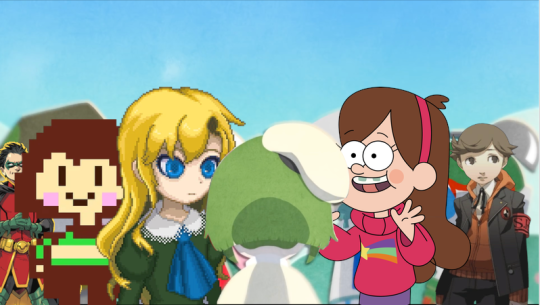
Amane in @yall-hate-kids-tourney
She's up against Mabel this round (in three hours). Y'know, the winner of the tourney where we kept propping up Mahiru?
If she wins, she'll be up against either Chara or Ken.
If she loses, it's Mary or Damian.
How'd our niche webanime girl get to the main semifinals with these big shots again? We need to do that again! Milgramblr, assemble!
[Image ID: The shot of "Magic" where the mascots are looking down at Amane, except they're Damian Wayne, Chara Dreemurr, Mary (from Ib), Mabel Pines, and Ken Amada. /end ID]
17 notes
·
View notes
Text
WE’RE ON TV TROPES MEN
https://tvtropes.org/pmwiki/pmwiki.php/FanficRecs/WordGirl
https://tvtropes.org/pmwiki/pmwiki.php/WebAnimation/WordgirlRewired
16 notes
·
View notes
Text
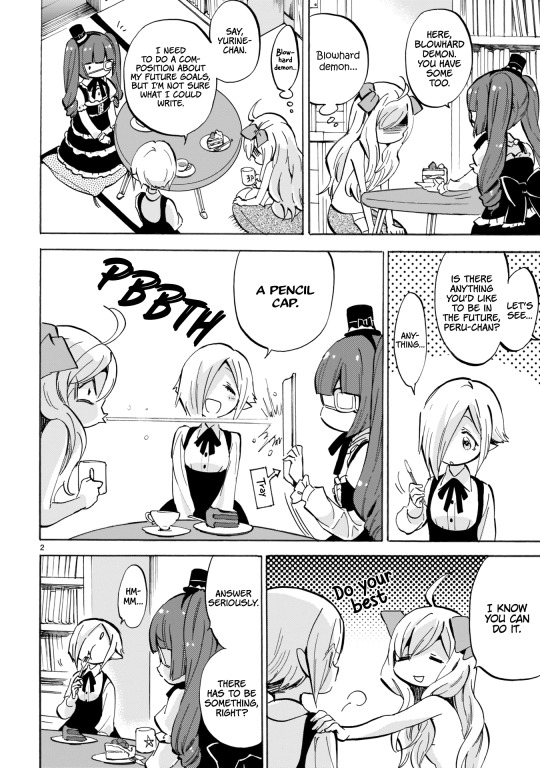
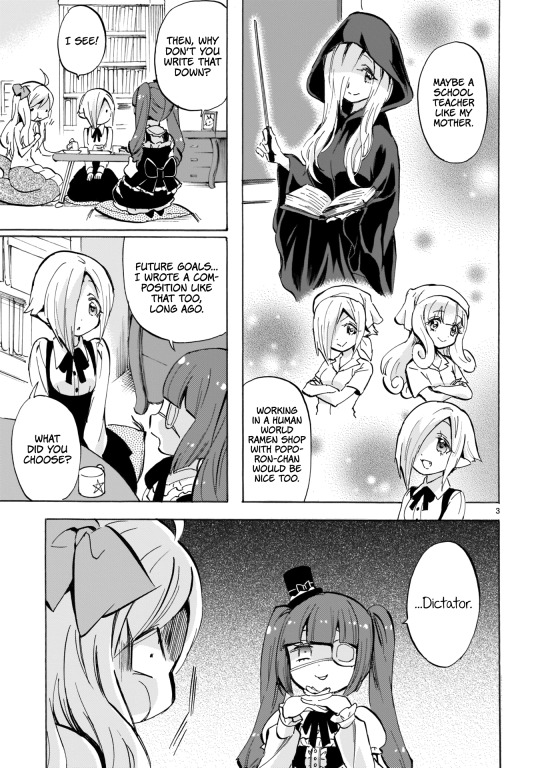
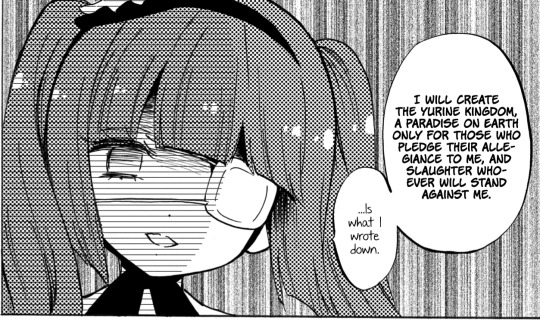
By the way, this is basically what happens in a webanime uploaded to the jashin channel
youtube
2 notes
·
View notes
Note
*quietly watching the chaos unfold as niche webanime characters are pitted against bigger shots*
Meanwhile, on y’all-hate-kids, it seems our blorbos have some traction, at least in this moment. I would love for them to meet in the finals.
Not only that, but last time I checked, a few of them where WINNING!
And :3 yesssss....
4 notes
·
View notes
Text
3+ Simple Steps to Build an Animated Website Navigation Bar

Creating an animated website navigation bar can greatly improve both the functionality and visual appeal of your website. By using simple techniques, you can enhance your website’s navigation, making it both interactive and engaging for users. In this article, we’ll break down the process of building an animated website navigation bar in just a few steps. We will also explore how to incorporate advanced features like a colour effect navbar and menu navbar to add a personal touch.
Step 1: Set Up the Basic Structure for Your Animated Website Navigation Bar
The first step in building an animated website navigation bar is to establish its basic structure. This process starts by creating the HTML layout that will hold your navigation links. A simple navigation bar usually consists of an unordered list (<ul>) with list items (<li>) for each link.
For the animated navbar HTML CSS setup, ensure that your links are inside the <nav> container element. This gives your navbar a structure that can be easily styled and animated using CSS. For a modern look, you can style the list to appear horizontally, ensuring the links are aligned evenly across the screen.
This basic structure will be the foundation upon which the animation effects will be built. By adding specific classes to each <li> element, you will be able to target them with CSS and apply hover effects or more complex animations as needed.

The next step is to make your menu navbar more functional by adding the links that users will interact with. A menu navbar is a list of navigation items that guide users to different sections of the website. Ensure that these links are clear, concise, and intuitive so that visitors can easily navigate through your site.
Once you’ve set up the basic structure and links, you can move forward with adding the CSS styling and animation.
Step 2: Add Styling and Animation Effects with CSS
After setting up the basic structure of your animated website navigation bar, it’s time to move on to the CSS. Here, you’ll define the visual style and add simple animations to the navbar.
Styling the Animated Navbar HTML CSS
To give the animated website navigation bar a sleek, professional look, you can start by applying basic CSS styles. This includes setting the background color, defining font sizes for the links, and adjusting padding for a clean layout. You can also use flexbox to align the navbar items horizontally or vertically, ensuring a modern, responsive design.
Once the structure is in place, it's time to make the navbar more interactive. The most common effect is to change the appearance of each menu item when the user hovers over it. You can achieve this effect with the :hover pseudo-class in CSS. By changing the background color, text color, or adding a smooth transition effect, users will get immediate visual feedback when they interact with the navbar.
The transition property allows you to control the speed and ease of the animation, giving your animated navbar HTML CSS a polished, fluid feel. A hover effect, such as changing the background color or highlighting the active item, can help users know where they are in the navigation process.

Adding Advanced Effects: Colour Effect Navbar
To take your animated website navigation bar to the next level, consider incorporating a colour effect navbar. This feature dynamically changes the background color or text color of the navbar items as the user interacts with them. For example, you could highlight the active menu item by changing its color to reflect the section of the website the user is viewing.
A colour effect navbar is an excellent way to create a more engaging and responsive experience. This effect is especially useful for websites with long, scrolling content, as it provides users with a visual cue indicating which section they are currently on. For example, the navbar item for the section the user is reading can be highlighted with a different color, helping to orient them on the page.
To implement this effect, you can use a combination of JavaScript and CSS. JavaScript can track the scroll position of the page or the active section, and CSS can apply the necessary style changes to the navbar items.
Step 3: Enhance Responsiveness and Mobile Compatibility
A crucial part of building an effective animated website navigation bar is ensuring it works across all devices, from desktop to mobile. This is where CSS media queries come into play. These queries allow you to adjust the design of your menu navbar based on the device’s screen size.
For mobile devices, it's important to create a collapsible or "hamburger" style menu. This design keeps the navbar compact when viewed on small screens, saving space while still offering full navigation functionality. When users click on the hamburger icon, the menu can slide in or drop down, giving them access to the full list of links.
Adding a menu navbar for mobile users also requires you to add additional CSS styles to ensure that the navbar is easily accessible. On larger screens, the navbar may appear as a full horizontal menu, but on smaller screens, the items should stack vertically or be hidden behind a toggleable menu button.

Testing for Cross-Device Compatibility
Once you have built the initial animated website navigation bar, it’s essential to test its responsiveness. Make sure the navbar functions well on different screen sizes and that the animations and hover effects still work smoothly. Mobile users should have a seamless experience with the menu navbar, and the colour effect navbar should also adapt to different devices, ensuring that the user experience remains consistent.
Conclusion
Building an animated website navigation bar doesn’t need to be complex. By following these three simple steps, you can create a sleek, functional, and engaging navbar that enhances the user experience on your site. Start by setting up the basic structure with HTML, then move on to styling and animation using CSS. Adding advanced features like a colour effect navbar will give your navbar a modern touch that encourages user interaction.
To ensure a fully responsive and mobile-friendly design, don’t forget to make your menu navbar adaptable to different screen sizes. Testing across devices will help guarantee that your animated website navigation bar works seamlessly for all users. With a few simple steps, you can transform your website’s navigation into an interactive and visually appealing element that enhances both functionality and design.
#webdesign#frontenddevelopment#webdevelopment#responsivedesign#animatedcarousel#animatedtext#uiux#html#css#webanimation
6 notes
·
View notes
Video
youtube
free premium html and css template with javascript | free template #htm...
#HTML, #CSS, #JavaScript, #WebDevelopment, #FrontendDevelopment, #Coding, #WebDesign, #ResponsiveDesign, #DynamicWeb, #UserInterface, #UIUX, #Website, #HTML5, #CSS3, #WebDev, #InteractiveWeb, #MobileFirst, #GridLayout, #Flexbox, #Bootstrap, #WebAnimation, #AJAX, #DOMManipulation, #APIs, #FrontEndCoding, #FullStack, #Scripting, #SEO, #WebPerformance, #CrossBrowser
4o
1 note
·
View note
Text
🌞 Дизайн сайтов: Как создать визуально привлекательный и функциональный сайт 🌞
Доброе утро, друзья! Сегодня мы погружаемся в мир веб-дизайна и обсудим, как создать сайт, который не только выглядит великолепно, но и прекрасно функционирует. Готовы? Давайте начнем! 🚀 1. Чистый и минималистичный дизайн: Меньше — значит больше. Чистый и минималистичный дизайн помогает пользователям сосредоточиться на содержимом, а не отвлекаться на лишние элементы. Убедитесь, что ваш сайт выглядит аккуратно и организованно. 2. Удобная навигация: Легкость навигации — ключ к успеху. Пользователи должны легко находить нужную информацию. 3. Качественный контент: Контент — это король. Ваш текст должен быть информативным, интересным и легко читаемым. Используйте изображения, видео и инфографику для привлечения внимания и удержания интереса пользователей. 4. Оптимизация скорости загрузки: Скорость загрузки имеет огромное значение. Никто не любит ждать, пока загрузится сайт. Оптимизируйте изображения, используйте кэширование и миним��зируйте код, чтобы ускорить загрузку страниц. 5. Адаптивный дизайн: Ваш сайт должен отлично выглядеть и работать на всех устройствах. 6. Визуальная привлекательность: Используйте высококачественные изображения и продуманную цветовую палитру. Визуально привлекательный сайт привлекает внимание и вызывает положительные эмоции у пользователей. 7. Призыв к действию (CTA): Не забудьте про CTA. Четкие и заметные кнопки призыва к действию помогут направить пользователей на нужные шаги — будь то регистрация, покупка или подписка на рассылку. Заключение: Создание визуально привлекательного и функционального сайта включает чистый дизайн, удобную навигацию, качественный контент, быструю загрузку, адаптивный дизайн, визуальную привлекательность и четкие CTA. Следуйте этим советам, и ваш сайт станет настоящим шедевром! 🌐 tutmee.ru | Telegram: @tutmee #WebAnimation #WebMagic #ProfessionalDesign
0 notes
Text
11 Essential Reasons Why Your Business Needs a Website | One-Call
In today's digital age, a website is crucial for businesses of all sizes. Here are 11 essential reasons why your business needs a website from One-Call: 1) Establish an online presence and credibility, 2) Reach a global audience, 3) Provide 24/7 access to information, 4) Showcase your products and services, 5) Enhance customer service and support, 6) Increase brand awareness and recognition, 7) Generate leads and drive sales, 8) Stay competitive in your industry, 9) Establish a direct marketing channel, 10) Analyze user behavior and gain valuable insights, 11) Enjoy a cost-effective marketing solution. Don't miss out on the numerous benefits a well-designed website can offer. Contact One-Call, a leading web development company, to create a professional online presence that drives growth and success for your business.
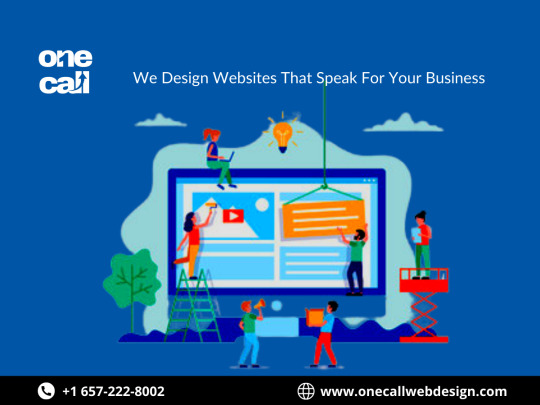
#DigitalMarketing#SocialMediaMarketing#ContentMarketing#InfluencerMarketing#VideoMarketing#EmailMarketing#DataAnalytics#WebDesign#UXDesign#ResponsiveDesign#MinimalistDesign#WebAnimation#SEOStrategy#KeywordResearch#LocalSEO#VoiceSearch#SEOAudit#TechnicalSEO
0 notes
Note
For the Tvtropes page, I think it's best to separate the old version and the new into different sections on the same page. Possibly with a preceding section detailing tropes for both versions. You can use folders to prevent the page from getting too long. A page off the top of my head that I can use for example is that of WebAnimation / LaceyGames
Thank you again for this advice! As you can see below, I've managed to change the page to something much easier on the eyes:
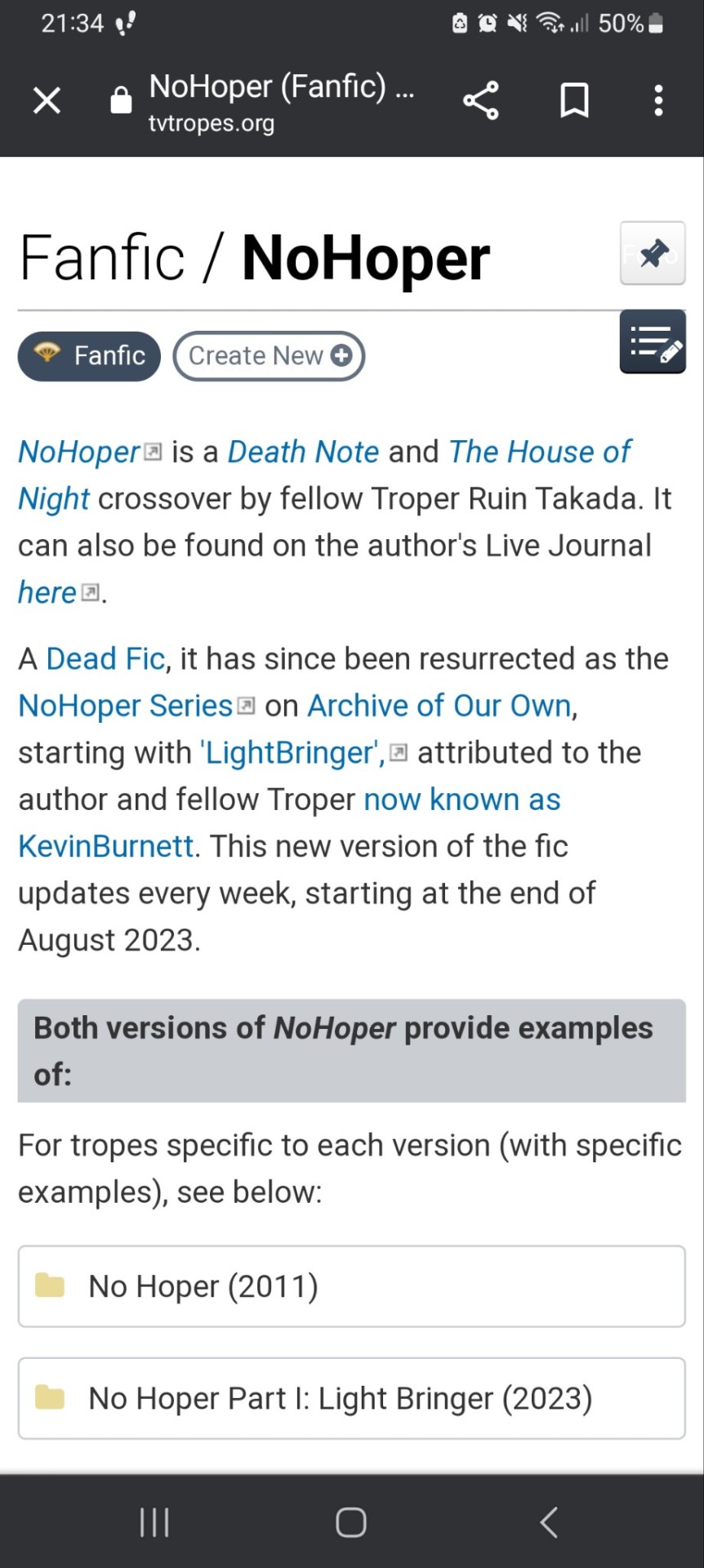
We'll need to add tropes that apply to both versions of the fic (so, more general ones like Crossover Fic, Alternate Universe, You Are What You Hate, etc.), and then add tropes (with examples) that are specific to the new version.
Of course, we've only got the first chapter up of LightBringer so far, so I'm cool with this taking a little more time.
#Death Note#House of Night#fanfic#crossover fic#LightBringer#TV Tropes#ask#anonymous#thank you again!!!
0 notes